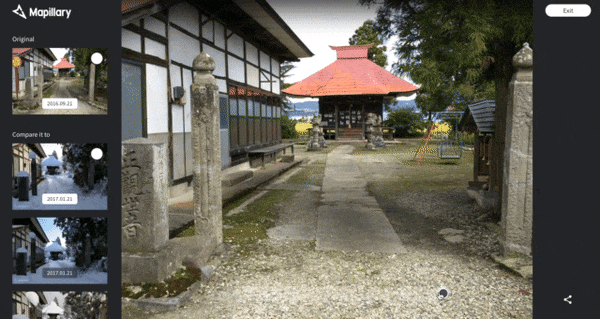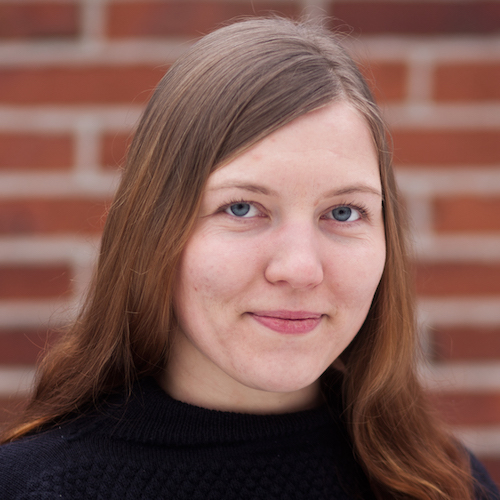How to Make Time Travel Happen
The Time Travel feature on Mapillary is great for observing how places change in time. Here's an insight into how it works and what you can do to get more matches between images.
Our contributors sometimes ask how often they should capture images of the same route. The answer is more or less this: any time there is something new about the surroundings (like a new construction, new season, or even new weather). And sometimes, the interesting thing to note is that there is nothing new in a month or even a year. In both cases, it's a valuable piece of information, and it's convenient to observe with the Mapillary Time Travel feature.
 Seasons change in Japan (by tm3594)
Seasons change in Japan (by tm3594)
As noted when we released the Time Travel feature to our web app, the theory behind time travelling is pretty simple: capture images on some path, do it again at the same place some time later, then view one of those images on Mapillary on the web and access time travelling from the little clock icon on the right.
So in theory, theory and practice are the same. In practice, that's often not the case. Sometimes you have gone down the same road several times, but navigate back and forth along the imagery as much as you want—the clock icon remains stubbornly greyed out. What's the problem?
How Time Travel works on Mapillary
There are three criteria that need to be met for there to be Time Travel between two images on Mapillary.
- The technology we use for 3D reconstruction—Structure from Motion (SfM)—is able to find enough correspondences between the images.
- The images are sufficiently close to each other (within 12 meters) according to the 3D reconstruction.
- There is no more than a 22.5° difference in the viewing direction (compass angle) according to the 3D reconstruction.
Construction progress in France (by zimmy)
Some notes on the above. First, we use SfM to improve camera positions. By triangulating the information contained in several images around a place, we can determine the structure of the 3D scene and position the cameras according to that structure. This improves the relative positioning between the cameras used to capture the images compared to the often rough or slightly off positions reported by e.g. your phone's GPS. The position and compass angle values used for the Time Travel matches are related to the positions after the SfM calculations.
As new images get added in an area, we use the new information and recalculate these corrected positions, and they should get closer to reality with every piece of information added. This recalculation also explains why sometimes, a Time Travel match can suddenly appear or disappear between images that have both existed for a while. It depends on the third, fourth, and x-th image uploaded from the area.
Second, because SfM needs to find matches between the images, at least some part of a pair of Time Travel images needs to depict the same structures in roughly the same conditions. If an area has been completely rebuilt between captures or if the conditions change a lot, e.g. from day to night, the images will look very different leading to no correspondences. In both cases there is a higher probablility of getting time travel matches if there are captures depicting the states of the area in between the two extremes. Capture the area being rebuilt multiple times during the construction phase and capture a building at different times with different lighting in daytime, during the the evening, and in the night.
Third, the location and direction thresholds are not an "absolute truth". They're chosen by our computer vision team with the aim to find a balance between the number of matches and the quality of matches. It is a trade-off, by increasing the threshold, we might get more time travelling opportunities, but the quality of the extra visualisations would often be worse (they wouldn't necessarily depict the same place at different times).
Last, time travelling will not be possible between images in the same sequence. This might be intuitive when capturing e.g. with your phone, because the sequence then represents images collected around the same place and the same time. But when using our web uploader without publishing each capture session separately, you might end up with images from very different times presented in one sequence, and as a result, Time Travel won't work.
The bottom line
So how to increase the number of good-quality Time Travel matches on Mapillary? The answer is quite simple. Capture more! Not only will it work directly, since more images mean more chances, but also indirectly because location information is improved for all images in the area. Talk about a win-win!
If you have any questions about this, write to us on support@mapillary.zendesk.com, and don't forget to share your time travels on Twitter and Facebook with #MapillaryTimeTravel.
/Katrin
